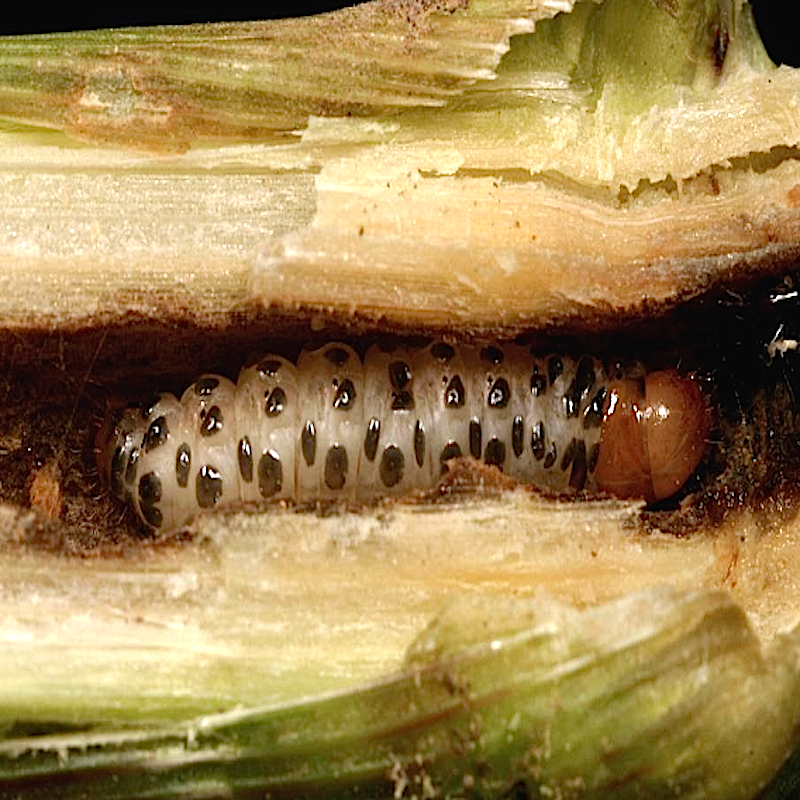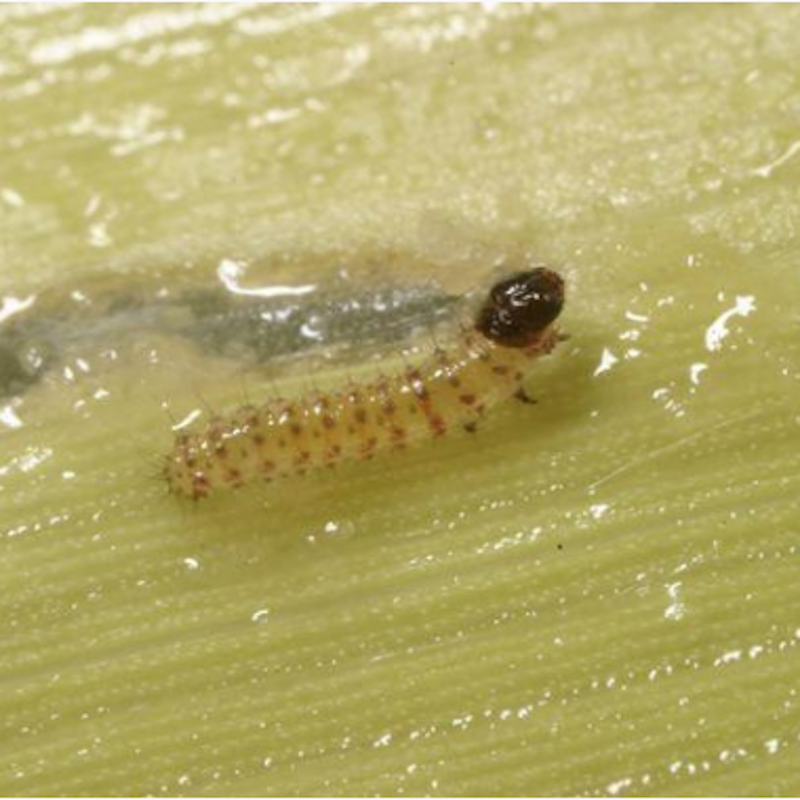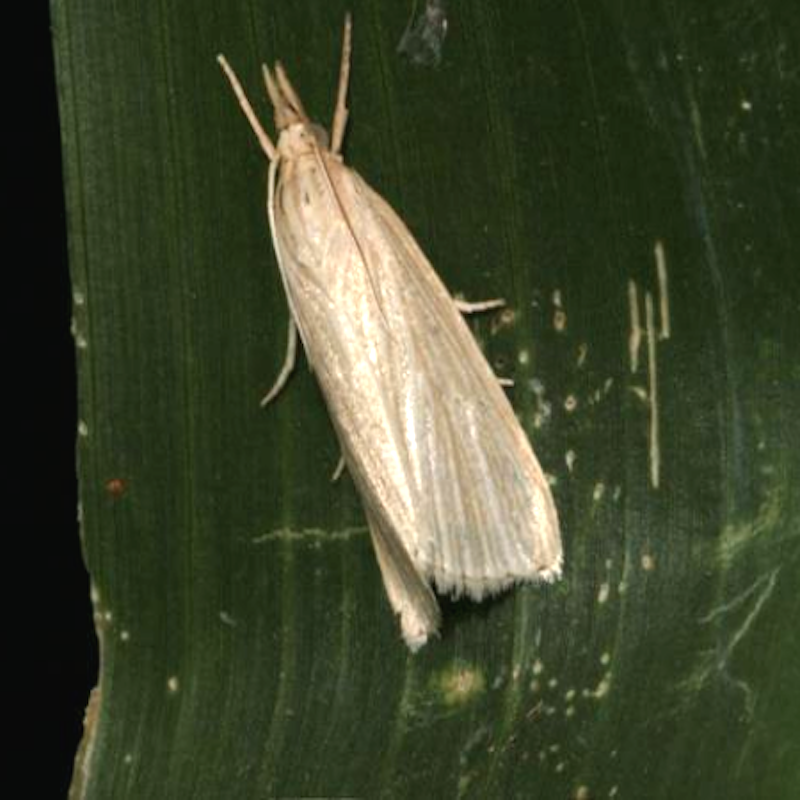
Southwestern corn borer


First-generation infestations begin in late June and consist of dark-spotted white worms that feed for five to 10 days on leaf tissue in the plant whorl, then move downward to begin tunneling within the stalk. Tunneling can extend far enough down to kill the growing point on small plants (deadheart), though deadheart injury does not usually occur on plants greater than 30 inches in height. The second (and most damaging) generation occurs in August. By mid-September the majority of the larvae are full grown and have tunneled down to the base of the stalk beneath the soil line to prepare for hibernation. By then, larvae begin to lose their dark spots and will be recognizable only as large, white larvae. In final preparation for overwintering, many larvae crawl back up the inside of the stalk and chew a ring around the interior, leaving only a thin layer of the exterior stalk intact. These girdled plants soon break and fall over, which contributes to extensive harvest losses. Girdling usually begins around Sept. 1 and is over by the first week of October.
